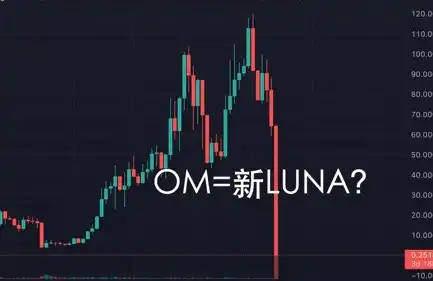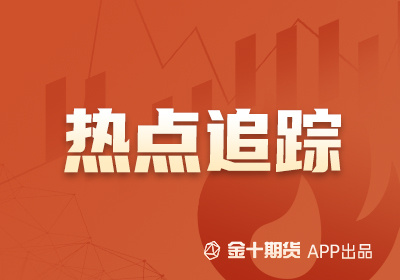Author: shu, In the early morning, RWA sector project MANTRA (OM) fell 90% in a short period of time, plunging from $6 to $0.5 billion, and its market value evaporated by more than $5.5 billion. Three hours later, the MANTRA team issued a statement saying that the decline was caused by irrational liquidation and had nothing to do with the project itself, and said it was not done by the team. Subsequently, OM rose from around $0.5 to $1.2, briefly losing ground. According to Coinglass data, the OM contract liquidation reached US$58 million in just four hours. Before this plunge, OM has gone through several violent rises since November last year and was called "Strongzhuang Demon Coin" by the community. OTC or team smash the market? The life of OM high-control disk Recently, the community and multiple data detection tool websites have released news that OM large users have withdrawn their coins and transferred them to the trading platform. There are also rumors that OM has completed several OM transactions with a discount of 50% or more, and when a large player starts to smash the market, OM buyers will also fall into panic and sell. On March 25, according to TheDataNerd monitoring, MANTRA's investment institution Laser DIgital deposited 1.7 million OMs worth US$11.49 million in Binance. The wallet accumulated a total of 27 million OM last year, and it still holds 6.756 million OMs worth $45.67 million. Yesterday, according to Arkham monitoring, the 0xA8...A84f address took out 776,000 OMs from Polygon's StakedOM contract, worth approximately US$5.84 million. According to Genç Trader monitoring, the wallet address 0x9a…1a28 transferred about $20 million in OM to OKX 23 hours ago. Judging from past records, this address just took out about $40 million in OM from Binance a month ago, and was one of the whales that had previously raised the price of the coin. The smashing of the market by many large OM players is considered to be the direct cause of this plunge, but in the eyes of the community, perhaps all this was planned. Airdrop PUA In November last year, MANTRA officially announced its airdrop rules, saying that it would change the previous "3-month cliff period, followed by initial flow allocation and 9-month linear unlocking" to "shortening the cliff period to 1 month, followed by 11-month linear unlocking" to "shortening the cliff period to 1 month, followed by 11-month linear unlocking" to trigger strong dissatisfaction in the community. In the early stage, MANTRA stimulated users' enthusiasm for participation through high-profile expectations management, claiming that it will distribute 50 million OM tokens, and promised to unlock 20% as soon as it goes online, and the airdrop will be completed within one month. However, in actual implementation, MANTRA has successively modified the airdrop rules, first changing "unlocking when online" to "starting linear release in one month", and further postponing to "10% first phase release, the remaining vesting period is as long as three years." At the same time, in line with the changes in the roadmap and token allocation structure, MANTRA essentially deposits community traffic into a long-term locking tool by continuously extending the cashing cycle. When user sentiment rebounds, the project party introduces a governance voting mechanism to transfer responsibilities in the form of "community consensus", but in actual operations, the voting rights are concentrated in the hands of the project team or related parties, and the results are extremely controllable. Finally, some early participants were also excluded from the airdrop list. The project party freezes its rights on the grounds of "Sybil attack", but does not disclose the detailed basis. Height control disk The reason why OM has continued to rise in the past six months is its team's high control over the market. According to KOL@nihaovand, three waves of buying communities with different price ranges will usually be used to turn to promote the price of tokens. At the same time, the project will arrange an off-site exit channel for coin holders. These funds obtained after exit will be used to raise the price of the currency and lay the foundation for the next wave of over-the-counter capital inflows. Previously, many parties revealed that the MANTRA team controlled 90% of the supply of OM tokens. Crypto analyst Mosi once wrote an article to analyze how a project with only $4 million TVL could have more than $10 billion of FDV. The answer is that the team controls most of the OM circulation. The MANTRA team held 792M OM (i.e. 90% of the supply) in a single wallet, and the team was too lazy to even spread these supplies into multiple wallets. What is the real circulation volume of OM? According to Mosi's analysis, the true circulation of OM = 980 million (circulating supply) - 792 million OM (team controlled part) = 188 million OM However, this number may not be accurate. The team still controls a considerable portion of the OM, using these tokens to conduct witch attacks on their airdrops, further extracting out liquidity and continuing to control the flow. They deployed about 100 million OMs for the witch’s airdrops to attack themselves, so this portion of the tokens also needs to be deducted from the real circulation. In the end, the real circulation of OM may be only 88 million OMs. The lower real circulation makes it easy to control the price of OMs, and it can also easily clear any short positions. Traders should be afraid of shorting OMs because the team controls most of the circulation and can pull up or smash the price at will. Mosi believes that behind OM may involve Tritaurian Capital, a company that borrowed $1.5 million from @SOMA_finance (@jp_mullin888 is the co-founder of SOMA, which is owned by Jim Preissler, who is JPM’s boss at Trade.io) – as well as some funds and market makers in the Middle East. These operations further compress the true flow, making it more difficult to calculate. This may also explain why they are reluctant to release airdrops and decide to implement lockdown periods. If they do airdrops, the real circulation will increase significantly, which may lead to a sharp drop in prices. This is not a complicated financial project, but it looks like a intentional plan to reduce the real circulation of tokens and easily push up or smash the price of OMs.
After evaporating 5.5 billion US dollars in 15 minutes, it soared 4 times. Why did OM suddenly fall sharply?
Bot is not available
DisclaimerAll content on this website, hyperlinks, related applications, forums, blog media accounts, and other platforms published by users are sourced from third-party platforms and platform users. BiJieWang makes no warranties of any kind regarding the website and its content. All blockchain-related data and other content on the website are for user learning and research purposes only, and do not constitute investment, legal, or any other professional advice. Any content published by BiJieWang users or other third-party platforms is the sole responsibility of the individual, and has nothing to do with BiJieWang. BiJieWang is not responsible for any losses arising from the use of information on this website. You should use the related data and content with caution and bear all risks associated with it. We strongly recommend that you independently research, review, analyze, and verify the content.
Open the app to read more news
















No comments yet